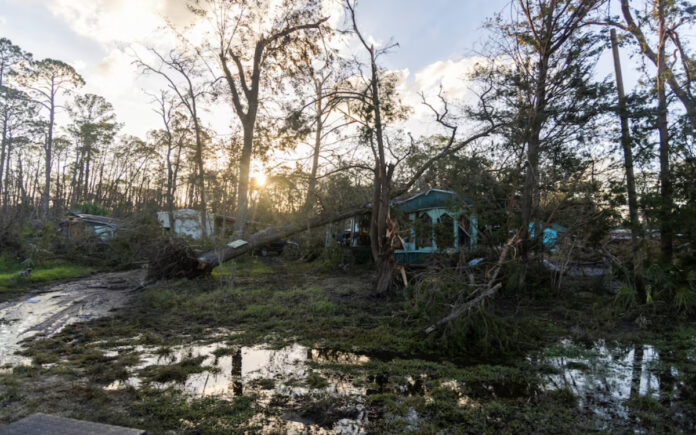Atlanta: Authorities across the southeastern United States are grappling with the aftermath of Hurricane Helene, one of the most powerful storms to strike the region, as the death toll climbs. By late Friday, at least 43 fatalities had been reported, and officials fear that more bodies could be discovered across multiple states.
Helene, which was downgraded to a post-tropical cyclone late Friday, continues to unleash heavy rains, leading to life-threatening flooding and the potential for dam failures that could inundate entire towns. In Pinellas County, Florida, Sheriff Bob Gualtieri described the devastation as unprecedented: “I would just describe it, having spent the last few hours out there, as a war zone.”
Over 3.5 million customers remained without power across five states, with authorities warning that it could take several days to restore full service. Scientists have noted that climate change contributes to the increasing intensity and destructiveness of hurricanes.
The storm initially made landfall in Florida’s Big Bend region as a powerful Category 4 hurricane on Thursday night, with winds reaching 140 mph (225 kph). The aftermath revealed a landscape littered with overturned boats, downed trees, submerged vehicles, and flooded streets.
Rescue operations were extensive, with police and firefighters conducting thousands of water rescues across affected states. In Unicoi County, Tennessee, emergency responders rescued over 50 individuals from the roof of a hospital after floodwaters swamped the area. Rising waters from the Nolichucky River impeded ambulances and emergency vehicles from evacuating patients, prompting emergency crews to use boats and helicopters for rescues.
In Tennessee, Cocke County Mayor Rob Mathis ordered the evacuation of downtown Newport due to the potential failure of the nearby Walters dam. Emergency officials in Rutherford County, North Carolina, warned residents near the Lake Lure Dam of possible failure, though it was deemed not imminent. Landslides in Buncombe County forced the closure of Interstates 40 and 26.
Also Read | Nepal Faces Devastating Floods and Landslides, Claiming 10 Lives and Leaving 7 Missing
As daylight broke on Friday, the full extent of the damage in Florida began to emerge. In coastal Steinhatchee, a storm surge of eight to ten feet (2.4-3 meters) displaced mobile homes, according to the National Weather Service. Treasure Island, a barrier island community in Pinellas County, saw boats grounded in front yards.
Tampa officials reported that emergency personnel had completed 78 water rescues, and many roads remained impassable due to flooding. The Pasco County Sheriff’s Office rescued over 65 individuals. Authorities had urged residents to heed evacuation orders, with National Hurricane Center Director Michael Brennan calling the storm surge “unsurvivable.”
Sheriff Gualtieri noted that conditions hindered first responders from answering multiple emergency calls, leading to the discovery of at least five deceased individuals in the county. Florida Governor Ron DeSantis reported two additional fatalities in the state, while Georgia’s Governor Brian Kemp’s office confirmed 15 storm-related deaths. North Carolina Governor Roy Cooper reported two deaths, and at least 19 fatalities were recorded in South Carolina, according to local officials cited by the Charleston-based Post and Courier newspaper.



